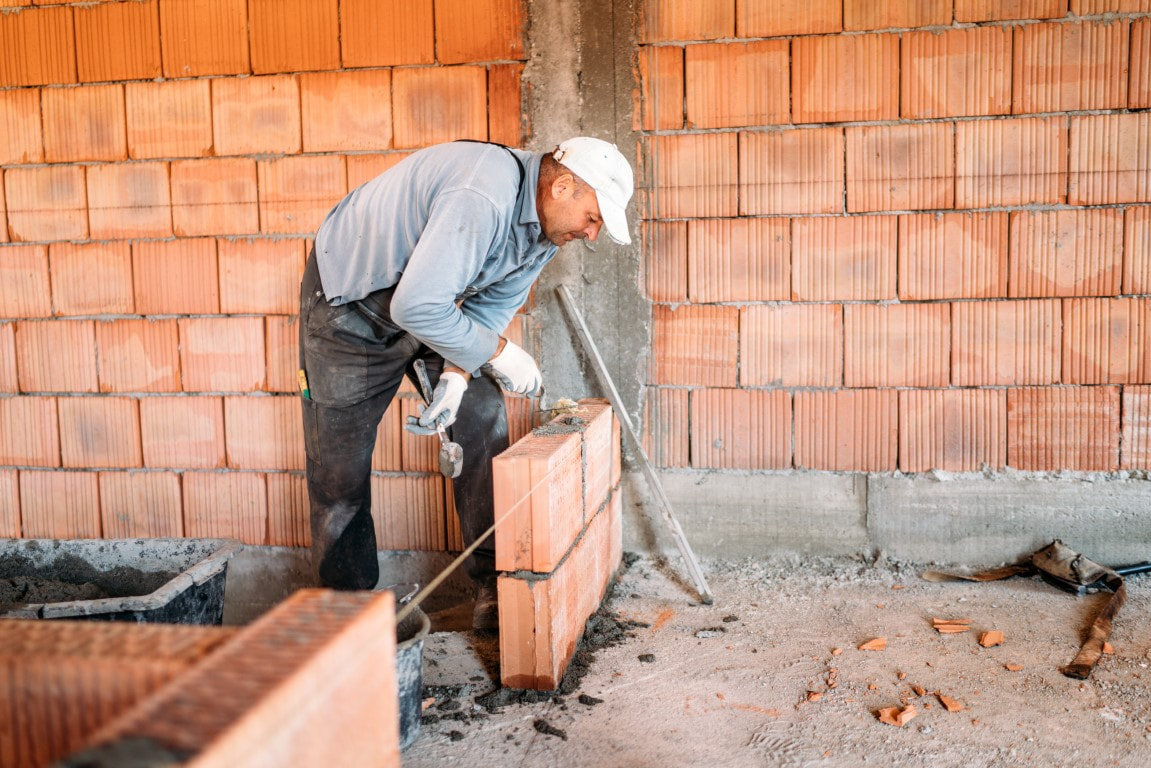Set Up a Chimney Sweep Today for a Tidy and Safe Fire Place
Set Up a Chimney Sweep Today for a Tidy and Safe Fire Place
Blog Article
Unlocking the Secrets of Lasting Masonry Construction Practices for Eco-Friendly Structures
Among the myriad approaches to environment-friendly structure, lasting masonry construction stands out as a reliable and sturdy technique that holds a wealth of untapped potential. From the selection of materials to ingenious building and construction methods, the tricks to accomplishing sustainability within masonry building and construction are multifaceted and interesting.
Benefits of Lasting Stonework Building
Embracing sustainable masonry building and construction methods not only lowers ecological effect but likewise provides long-lasting economic advantages to contractors and communities. By utilizing materials like recycled bricks, obstructs, and rocks, home builders can considerably reduce the carbon impact of their tasks while promoting source efficiency. In addition, sustainable stonework construction methods, such as proper insulation and thermal mass homes, can improve energy efficiency within structures, leading to decreased functional expenses with time.
Furthermore, the sturdiness and durability of stonework frameworks contribute to long-lasting economic benefits. Structures built making use of sustainable stonework methods usually call for much less repair and maintenance, equating to set you back savings for builders and homeowner. The durability of masonry materials likewise makes certain that structures stay steady and safe and secure, reducing the demand for constant renovations or substitutes.
Eco-Friendly Stonework Products
Using eco-friendly stonework products is a crucial step towards improving the sustainability of building and construction techniques and minimizing environmental effect while making best use of lasting economic benefits. Sustainable stonework products are sourced, produced, and made use of in a fashion that lowers total ecological effect. Lasting concrete blocks include recycled accumulations and may feature improved insulation homes, adding to energy effectiveness in buildings.
In addition, all-natural products like adobe, rammed planet, and straw bales offer exceptional thermal mass residential properties, reducing the need for heating and cooling down energy. These materials are usually locally offered, promoting regional economic climates and lowering transportation-related carbon discharges. By choosing green masonry materials, building and construction projects can dramatically decrease their environmental impact and contribute to the development of much healthier, more lasting constructed settings.
Energy-Efficient Masonry Strategies
Power efficiency plays an important role in boosting the sustainability of stonework building and construction practices. One vital energy-efficient stonework method is the usage of thermal mass, which includes incorporating thick materials like concrete or block right into the building's framework to soak up and save warm.

Technologies in Lasting Stonework
Recent innovations in sustainable stonework practices have actually brought around innovative techniques that are reshaping the building and construction market. One such development is the development of self-healing concrete, which uses germs embedded within the concrete to recover splits autonomously. This breakthrough not just reduces maintenance prices but additionally boosts the sturdiness of masonry frameworks, adding to their sustainability.
An additional remarkable advancement is the usage of recycled aggregates in stonework building - masonry contractor. By incorporating products such as crushed ceramic waste or recycled glass into concrete mixes, contractors can reduce the environmental impact of building and construction projects while preserving structural integrity. This technique not just diverts waste from landfills but likewise preserves natural deposits, making it a vital innovation in sustainable masonry building
In addition, the integration of digital layout tools, such as Structure Information Modeling (BIM), is company website changing the method stonework structures are intended and built. BIM enables even more exact estimations, lowered product wastage, and improved power performance, ultimately bring about more sustainable building important source practices. These developments jointly symbolize an appealing future for lasting masonry construction in the period of environmentally friendly structures.
Future Trends in Masonry Sustainability
With the innovative strides made in lasting stonework techniques, the future trends in masonry sustainability are poised to more change the building and construction market. Among the vital trends shaping the future of masonry sustainability is the raised assimilation of modern technology. Advancements such as Building Details Modeling (BIM) and digital reality simulations are being made use of to optimize stonework building procedures, bring about lowered material waste and boosted energy performance in structures.
Additionally, the advancement of unique sustainable products is readied to play a substantial role in boosting the eco-friendliness of stonework building. masonry contractor. Advancements like self-healing concrete, recycled accumulations, and bio-based binders are gaining traction for their capacity to minimize environmental effect while maintaining architectural honesty

Verdict
To conclude, sustainable masonry construction techniques use countless advantages for environment-friendly buildings. By using environment-friendly materials and energy-efficient methods, masonry can add to a more lasting built environment. Innovations in sustainable masonry are continually being established to further boost the environmental efficiency of structures. Looking towards the future, the fad of masonry sustainability is expected to expand, causing more environmentally pleasant and energy-efficient building practices in the years to come.
Report this page